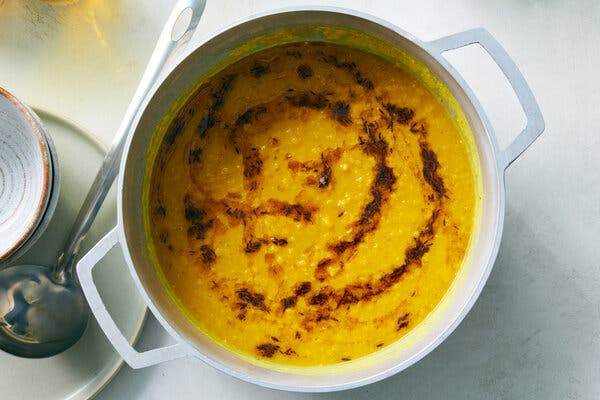Cheap, unfussy and adaptable, these lentils call up warming memories of home and family for many South Asians.
One of my favorite Hindi terms is “ghar ka khaana.” It literally means “home food,” but it also encompasses the singular joy and unfussiness of meals made in your own kitchen — the dishes that remind you of childhood, the ones you won’t often find in restaurants.
My quintessential ghar ka khaana? Dal.
Recipe: Everyday Dal
To make dal feels like an alchemical feat, watching the pebbly lentils turn creamy, starchy and golden with turmeric. I love the sizzle of the hot, spiced ghee when it is poured into the lentils, the way that dal envelops a bowl of rice like a hug. The first time I published my mother’s recipes for dal in my cookbook, “Indian-ish,” it felt as if I was letting people in on a secret — a solution to their weeknight dinner woes, courtesy of my ancestors.
Across South Asia and its diaspora, dal — which refers to both the legumes and the finished dish — is inherently linked to comfort, whether simmered with coconut milk, sweetened with a little jaggery or topped with crisp curry leaves.
In interviews, many people said it was the first food they fed to their children. The meal they missed most when they went off to college. The dish they break Ramadan fasts with. The first thing they learned to cook from their mother, who insisted on providing preparation times in whistles of a pressure cooker rather than minutes.
Thank you for your patience while we verify access.
